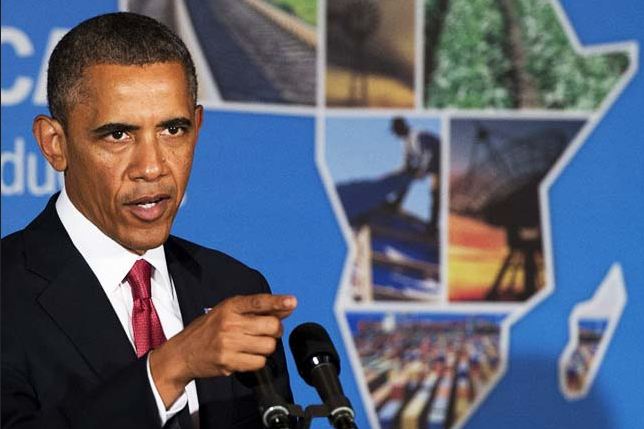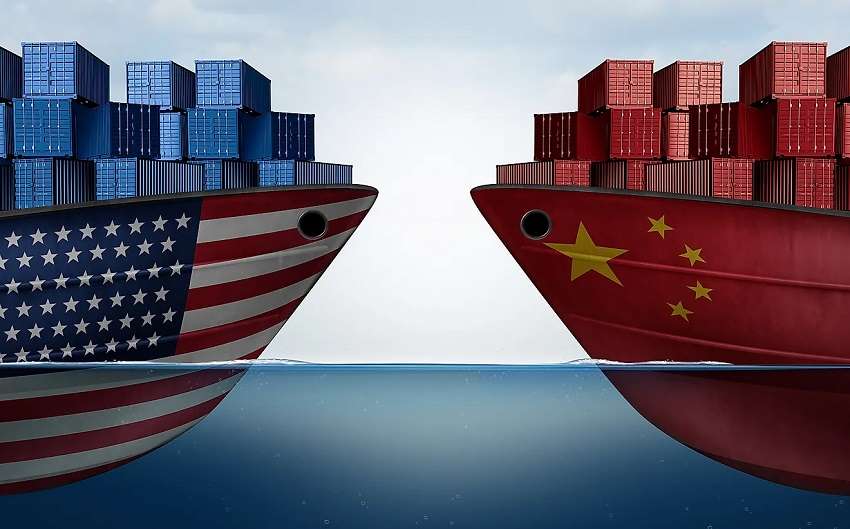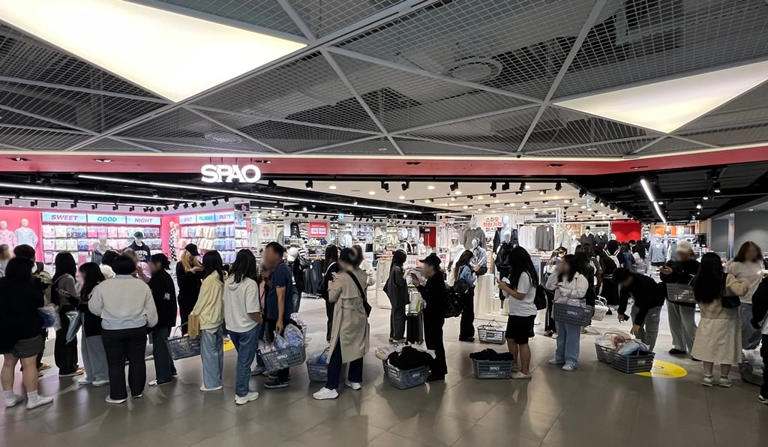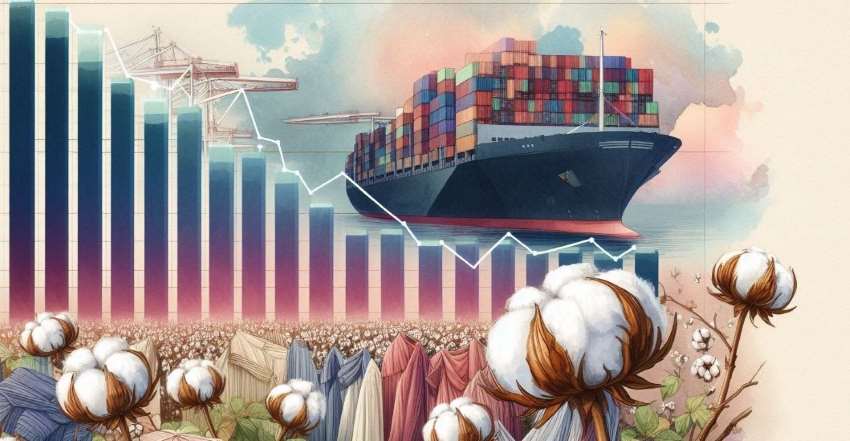FW
"Despite the AGOA duty-free privilege, not all African countries have been able develop themselves into textile and apparel production and export hubs. Kenya, Lesotho and Mauritius are the three prime names that account for most of the apparel exports under the AGOA program. In 2014, Kenya exported $423 million worth of apparel to the US, followed by Lesotho with $289 million, Mauritius $227 million and Swaziland $77 million."

AGOA renewal boosts African trade

AGOA treaty’s renewal was signed by President Barack Obama in June, 2015. Now, the African textile and garment industry is looking at taking advantage of duty-free access to the United States. Cost advantage and higher production efficiency in countries like Ethiopia and Kenya and also attracting many companies from Turkey, India and China to move their production to African countries. After AGOA agreement, these companies would also benefit from duty-free access to 8,000 products to the United States.
African nations on the other hand are looking for investors, who can create employment opportunities for locals. According to the Nairobi-based East African Trade and Investment Hub (EATIH), textiles and apparel account for some 90 per cent of exports from sub-Sahara African countries to the United States. The bulk of exports are shipped by sea, but small quantities needed for seasonal purpose or last-minute ordering is also shipped by air.
Existing apparel exporters are also expanding capacities to take advantage of AGOA. Mombasa Apparel, for instance, an AGOA-supported company, launched its fourth textile factory in November 2014 on the coast of Kenya while Taiwan's New Wide Garment, which already has eight factories in Kenya, Lesotho and Ethiopia, aims to further expand its African operations.
However, despite the AGOA duty-free privilege, not all African countries have been able develop themselves into textile and apparel production and export hubs. Kenya, Lesotho and Mauritius are the three prime names that account for most of the apparel exports under the AGOA program. In 2014, Kenya exported $423 million worth of apparel to the US, followed by Lesotho with $289 million, Mauritius $227 million and Swaziland $77 million.
Kenya, Ethiopia leads the pack
Among the African countries, Kenya has emerged as Africa's largest apparel exporter, followed by Lesotho, Mauritius and Ethiopia. Now the Ethiopian government is focusing on growing textiles and apparel exports. Experts say African countries will have to substantially bring down energy costs and improve infrastructure facilities to strengthen trade opportunities.
Moreover Ethiopia and Kenya can grow their textile and garment industries. With efforts by leaders of Kenya, Rwanda and Uganda to make the port of Mombasa and the northern corridor more efficient will help in smoothening and establishing exports from these countries. The three leaders have also committed to speedily upgrade infrastructure connecting their countries, including the standard gauge railway and Kenya's Mombasa port.
According to Gail Strickler, assistant United States trade representative for textiles and apparel, African textile and apparel exports to the US can quadruple to $4 billion over the next decade through the renewal of the AGOA, creating 500,000 new jobs. And to gain the leading position as the textile and garment exporter, the African countries urgently need to address issues revolving around infrastructure facilities and customs procedures.
Trade.gov
Ginners in Pakistan say research institutes and agricultural scientists have failed to evolve new varieties of cotton in the last two decades. And taking advantage of this situation, the seed mafia has strengthened itself and supplied substandard, less germinated, unapproved, spurious and uncertified seeds to farmers at exorbitant prices. They also say, sugar mills are being set up in the core cotton zone and this will have detrimental effects on cotton and ginning industries in the region. Construction of new sugar mills, they say, will destroy the economic balance of the cotton belt and, consequently, the land will become barren due to salinity and water logging.
Ginners have demanded a bailout package immediately, soft term loans and interest free-loans, which would be repaid in five years. Their main complaint is that they have to wait endlessly for export refunds. They want export incentives.
In contrast Indian exporters enjoy some incentives. They are entitled to three to five per cent additional rebate, if they export their products to focus market. Pakistan, incidentally is among the focus market for Indian ginners. The Pakistani textile industry wants similar support and access to cheap power and cheap labor. Pakistan was granted GSP Plus status by the EU in January 2014.
Year 2015 didn’t prove to be fruitful for cotton spinning mills as the yarn prices continued to remain tricky, after collapsing 8-15 per cent from January 2014, across various grades. Apparently, mills in the south that spin almost half the yarns in the country were adversely affected by massive rains in Tamil Nadu over the last six weeks that hindered trade and logistics.
Similar scenes can be recorded on the export front too. Prerana Desai, VP (Research) at Edelweiss Agri-services and credit inferred that, weekly exports in the fourth week of November recovered from the lows recorded in the previous week at 15.4 million kg. But exports sunk back in December’s first week, as exports to the top four destinations—China, Bangladesh, Egypt and the US—were feeble.
Mills were loaded with huge inventory after spinning mills added capacity since 2012, and this overcapacity is a bigger problem. In addition, Chinese buyers have shifted to imports from Vietnam and Indonesia, deteriorating the demand for Indian yarn. Southern India Mills’ Association (SIMA) revealed that India’s trade in international markets has reduced by about 14 per cent while Vietnam’s and Indonesia’s trade has risen by 29 per cent and 10 per cent respectively.
Presently the only bright side that assists the pressure to stand low margins is the low cotton prices both internationally and in local markets. Meanwhile, stock prices of select integrated mills have run-up due to a steady improvement in the entire scope of cotton textiles. Moreover, without undermining the high inventory, certain units have cut down production which should certainly decrease surplus stock and carrying costs for mills. Any increase for yarn in global markets in the future is likely to be the game changer for pricing and profitable avenues.
Scientists at Germany’s Hohenstein Institute, working on a project on plus-sizes on German, have reformed sizing charts for plus sizes. Specific body shapes have been identified of men whose waist size and weight are above standard garment sizes to cater to the demand for this target group in the apparel industry.
The proportion of large menswear in the market has relatively increased with the proportional rise in demand. A press release from the Institute says the absence of adequate and relevant sizing charts is a catalyst to the struggle faced by the clothing industry to develop suitable products.
A survey using 3D scanner technology was carried out by experts from Hohenstein. In accordance, body types have been defined for sizes 60 to 78 and the sizing charts to contain five sizes for menswear.Waist circumference was a specific element of the study.
With the new body measurement analysis, virtual 3D body models have been developed by researchers to assist the apparel industry to produce optimised basic patterns for trousers and jackets, using this varied approach.
Almost 17 technical institutes from across the country have won awards in this year’s AICTE-CII Survey of industry-linked technical institutes which included ten awards in degree category and six in diploma.
In degree category, there were eight awards in engineering and one each in pharmaceutical and architecture categories. The engineering awards included one award for best National Institute of Technology (NIT) which was won by NIT Trichy. There was one award in the emerging category in engineering which went to Chennai-based Vel Tech Multi Tech Dr. Rangarajan Dr. Sakunthala Engineering College.
The award for best industry-linked management institute was won by Mumbai-based Prin LN Welingkar Institute of Management Development and Research while there was no winner in the emerging category of management. In engineering, the other winners were DKTE Society’s Textile and Engineering Institute, Thiagarajar College of Engineering, Sona College of Technology, RMK Engineering College and Sri Sai Ram Engineering College. The award in the pharma category was won by SVKM’s Dr Bhanuben Nanavati College of Pharmacy.
The best performing institutes were selected after a five-and-half month long online survey and a subsequent four-month jury process. More than 60 experts from industry and academia took part in the jury process which included visits to institutes for on-site assessment of industry linkages of institutes. The fourth edition of the survey saw the number of participating institutes increase from 814 in 2014 to 901. This number was 355 in 2013 and 156 in 2012. The discipline-wise submissions rose from 2,744 in 2014 to more than 3,000 this year. This count was 1,124 in 2013.
www.aicte-india.org
So far China was the largest importer of raw materials including cotton, however, estimates suggest that Bangladesh may soon overtake it the world’s biggest cotton importer in the current crop season. According to data from the U.S. Department of Agriculture, in year ending July 31, Bangladesh will import a record 5.75 million bales of the fibre, up 6.5 per cent from a year earlier.
China is projected to import 5.5 million bales, the lowest since 2003 (one bale weighs 480 pounds, or 218 kilograms). Bangladesh’s share of the global cotton-export market doubled from 1995 to 2012, mostly because of the strong performance of the ready-made garments sector, the World Bank said in an October report. Since 2009, the nation has been the world’s second-largest exporter of clothing, after China.
The drop in Chinese imports is attributed to reasons like rising wages, falling yuan and it has more-than-ample stockpiles: most of the 104.4 million bales of global stockpiles predicted by the USDA the current crop year are in China. Also, unlike Bangladesh and several other Asian nations, China has curbs on imports, in the form of quotas and tariffs. Along with Bangladesh, Vietnam and Indonesia are also gaining market share. While cotton use by Bangladeshi mills is forecast to rise by 10 per cent in 2015/16, it will jump by 20 per cent in Vietnam, the International Cotton Advisory Committee, or ICAC, said on December 1, 2015.
www.usda.gov
Its about a month that the largest global textile machinery exhibition ITMA 2015 came to an end. The exhibition’s focus this time was on clean and sustainable machinery solutions. The exhibiting companies showcased latest innovations in their respective fields and many among them are reporting continuous enthused response from buyers.
While Oerlikon Neumag received orders worth more than CHF 50 million for staple fibre plant technologies from key customers in both Europe and Asia, finishing technology specialist Brückner’s orders are witnessing double digit million euro value range. The orders are for their machines for the finishing of woven and knitted fabrics, as well as coating lines for technical textiles and ranges for the carpet industry.
Also Germany’s DiloGroup, a dominant player in nonwovens machinery has received enquiries and orders for machine deliveries, as well as a large number of new projects. During the event, a signing ceremony was held for the delivery of a new compact Dilo needlepunching line for carbon fibre processing to the Institute of Technical Textiles (ITA) in Augsburg, Germany.
Several other machinery orders have been received by spinning systems specialists such as Rieter, Saurer, Savio, SSM, Staubli and Trützschler; by weaving and knitting machine leaders such as Dornier, Itema, Meyer & Cie, Pai Lung, Picanol, Shima-Seiki, Stoll and Toyota; and by finishing technology specialists such as Benninger and Fong’s. SPG Prints, based in Boxmeer, Netherlands which introduced its extraordinary 25-metres-long PIKE single-pass digital printing system sold its first two machines to KBC Fashion, based in Lörrach, Germany, and Adalberto Estampados of Portugal during the exhibition.
The 47th Hong Kong Fashion Week for Fall/ Winter will commence from January 18, 2016 at Hong Kong Convention and Exhibition Centre. The annual event is expecting some 1,500 exhibitors from 18 countries and regions, with Myanmar and Romania participating for the first time.
With the theme of ‘Fashion of Music’, a fashion avenue is created for the Hong Kong Fashion Week for Fall/Winter to resonate a variety of fashion and accessories with different thematic decoration: thermal clothing & down jacket products displayed in pop style area; infant & children’s display featured in a splendid classical music hall, while men’s wear & denim display will be laid out as a rock n roll platform.
More than 10 thematic zones are established to fulfill buyers’ demand. Fashion Gallery, the biggest showroom in size, puts recognizable brands of decent quality on stage. Emporium de Mode is a unique premium section dedicated to promote brand name in an elegant setting. Other zones consist of Activewear & Swim Wear, Bridal & Evening Wear and Handbags Select. The two debut Knitwear and Women’s Wear zones will display cardigans, sweaters and stylist garment respectively to form an integral part of the retail fashion scene. Another new zone named International Fashion Designers’ Showcase portrays masterpieces from over 150 global designers.
The forth new zone named Fashion Tech is set up to gather products related to Fashion Technology. Winswin, Hong Kong has innovated a breakthrough mannequin technology to create I.DUMMY, which has collected massive anthropometric data from worldwide populations and actual body scales from 3D Body Scanner. Its form changes according to the figures. The information will be useful for industry practitioners in designing suitable garment for customers. Techpacker is a Hong Kong based fashion apps company providing product lifecycle management tool. The apps help enterprises to save costs and improve quality. L&J from Korea will display cork made square backpack and snapback products at Fashion Gallery.
More than 10 fashion shows and parades will be held during the four-day fair. Kate Liegey, who designs outfit and jewellery for Grammy award winning singer Taylor Swift, will showcase Taylor Swift Collection at Fashion Parade
http://www.hktdc.com/hkfashionweekfw/en
Continuing their demand for higher minimum wages, thousands of Cambodian factory workers in two special economic zones (SEZs) in eastern Svay Rieng province's Bavet town continued their protests on Thursday. Around 30,000 workers from 39 factories in the Manhattan and Tai Seng SEZs are said to be on strike since Wednesday afternoon.
The agitation commenced after provincial labour officials announced the amount of increase in the minimum wage for the garment and footwear sectors that will take effect from next month. In October, the Cambodian government set the new monthly minimum wage for the garment and footwear sector at $140 for next year, up 9.4 per cent from the current $128. However, protesters are pressing for minimum $148 calling the announced increase too low.
The Garment Manufacturers Association in Cambodia (GMAC) has appealed to the government to take immediate effective and appropriate measures for the protection of security and safety of the investors and their properties. Garment and footwear sector, the kingdom's largest foreign currency earner, includes nearly 1,100 factories with some 700,000 workers, according to the government figures. The sector exported products worth $3.3 billion in the first half of 2015, accounting for about 80 per cent of the country's total exports.
Clean Clothes Campaign (CCC) on the other hand, recently joined more than 25 countries in a global call on major brands such as H&M, GAP, Levi's and Inditex to make sure Cambodian workers receive $177 as a first step towards a living wage.
www.gmac-cambodia.org
"AEPC is an empanelled assessment agency authorized by DGE&T under the Skill Development Initiative (SDI) to conduct MES Assessments in the apparel sector and by the Ministry of Textiles under the Integrated Skill Development Scheme (ISDS) to conduct assessments for apparel/garment and textile sector. In this endeavour, since its inception, AEPC’s Skill Assessment Cell assessed over 100,000 candidates under MES & NON MES category."

At the 36th Annual General Meeting of Apparel Export Promotion Council (AEPC), held in New Delhi, chairman Virender Uppal spoke about apparels exports industry’s achievements in FY15 and the roadmap for year ahead. The highlights of his speech included various initiatives undertaken by the council to boost export performance of the textile and apparel sector.
Export performance in FY15 and

Exports in dollar terms for the financial year 2014-15 were $16,846 million as compared to $15,001 million in the year 2013-14, representing an increase of 12.3 per cent. Apparel exports during the period from April to October 2015 were $9,793.6 million against $9,562.2 million reported during the same period previous fiscal, indicating an increase of 2.4 per cent.
During the year, AEPC apprised the government about various issues faced by the sector and appealed to resolve them at the earliest.
AEPC’s export promotion activities
Buyer Seller Meets were organized in Amsterdam, in June 2014 with 18 players participating; two meets in Barcelona and Madrid were also orgainsed in September with 29 participants.
At the Hong Kong Fashion Week and White Label the Council participated with 52 participants while in, Berlin, there were 17 participants. AEPC visited Apparel Shows in International Fashion Fair Tokyo, Japan (IFF) with 53 participants and Sourcing at Magic Fair, Las Vegas, USA with 70 participants, Australian International Sourcing Fair, Melbourne, Australia with 35 participants, Hong Kong Fashion Week with 51 participants, Sourcing at Magic Fair, Las Vegas, USA with 51 participants, Hong Kong Fashion Week, with 57 participants, Sourcing at Magic Fair, Las Vegas, USA with 65 participants, India Trend Fair (ITF) at Tokyo, Japan with 63 participants and International Sourcing Expo Australia (ISEA), Melbourne, Australia with 43 exhibitors AEPC’s members.
Domestic events and trade shows
The Council organised India Market Days at Apparel House, Gurgaon on April 24 and 25, 2014 with 78 participants at the fair; 32 buyers from 11 countries and 20 buying agents visited the fair. The 53rd India International Garment Fair was organised from July 14 to16, 2014 at Pragati Maidan, New Delhi with 387 exhibitors, 991 buyers and 548 buying agents.
Similarl India Market Days were held in October 2014 with 44 exporters, 33 buyers from 16 countries and 14 buying agents. Tex-Trends India, 2015 (incorporating 54th IIGF) was organised from January 28 to 30, 2015 at Pragati Maidan, New Delhi with 394 exhibitors participating.
Skill assessment cell and ATDC
AEPC is an empanelled assessment agency authorized by DGE&T under the Skill Development Initiative (SDI) to conduct MES Assessments in the apparel sector and by the Ministry of Textiles under the Integrated Skill Development Scheme (ISDS) to conduct assessments for apparel/garment and textile sector. In this endeavour, since its inception, AEPC’s Skill Assessment Cell assessed over 100,000 candidates under MES & NON MES category. AEPC entered into nine MoUs with implementing Agencies (IAs) namely Technopak Advisors, ILFS Clusters, Wazir Advisors, Karthikeya Spinning & Weaving Mills, Sri Lakshmi Cotsyn, ARTJS, CMAI, Modelama Exports and Matrix Clothing for conducting skill assessment.
Meanwhile ATDC was awarded ‘Best Training Institution-National’ by Education Award (Franchise India) at ‘Indian Education Awards 2015 in June, 2015, for its contribution to large scale quality skilling of youth especially women in rural areas. ASSOCHAM honored ATDC with the ‘Best Institute: Innovation Award’ at its Skilling India summit in New Delhi. ATDC was recognized for its innovative training initiatives.
www.aepcindia.com












